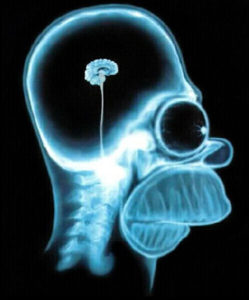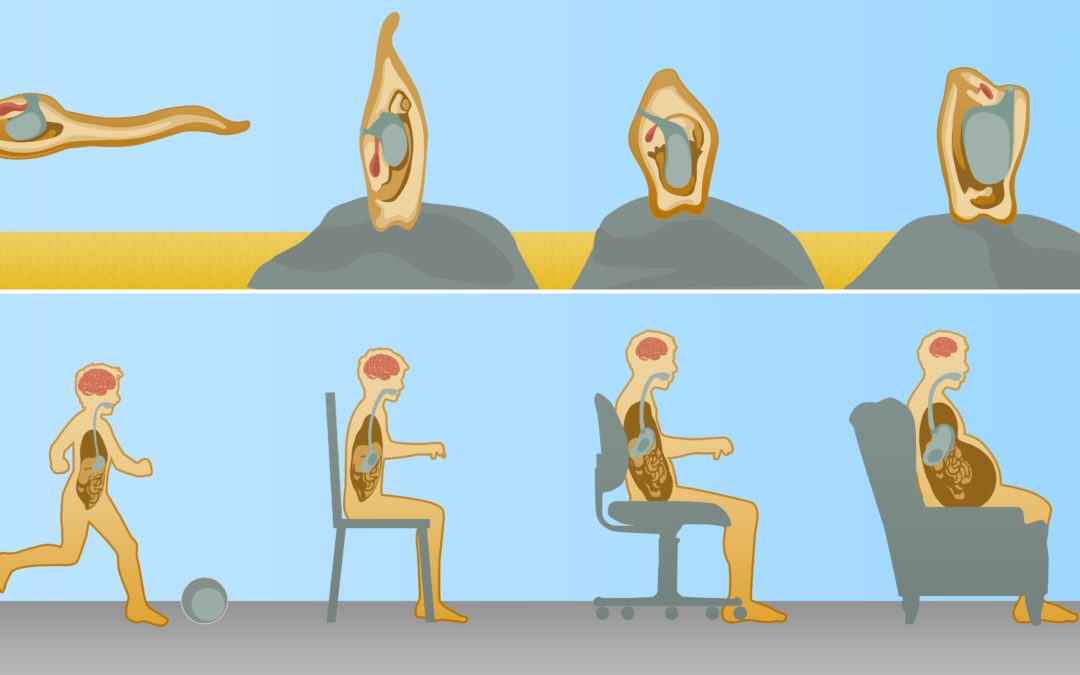So what do sea squirts have to do with your brain health? Sea squirts, also know as tunicates, are classified in the phylum Chordata, which includes animals with spinal cords including fish, birds, reptiles and even us humans. After hatching from eggs, sea squirts are tadpole-like creatures with a spinal cord, an eye and a primitive brain. Baby sea squirts swim around until they find a place to attach to, whether on a rock, the ocean floor or a reef. Once they attach to a surface, this becomes their permanent home, and they will no longer move. This is where something fascinating happens—once the sea squirt becomes stationary, they literally eat their brain.

The life of the sea squirt may show us how and why animals have evolved with brains and spinal cords—to orchestrate complex and rewarding movements. So you still may be asking, what does this have to do with my brain health? Researchers over the last several years have been showing a strong correlation with exercise or physical activity and brain size, which also relates with brain function.
When It Comes To Brain Function, Size Matters

It has been known for a number of years that as we age, our brains shrink. “Brain volume is one marker of brain aging. Our brains shrink as we age, and this atrophy is related to cognitive decline and increased risk for dementia,” says Nicole Spartano, with the Whitaker Cardiovascular Institute at Boston University School of Medicine. Certain areas of the brain have been shown to wither more with age, including the frontal and temporal lobes as well as the hippocampus. In fact, older adults lose 1-2 percent of their hippocampal volume every year. These areas of your brain have important roles in cognitive function, behavioral health and mental health. The most alarming fact is not only that brain shrinkage can lead to dementia, but increases your risk of an early death by as much as 70 percent.1
When you exercise, the neurons in your brain release a protein called Brain Derived Neurotrophic Factor (BDNF). BDNF helps to preserve existing neurons and also stimulates brain stem cells to convert into new neurons, which can make your brain grow larger. It was once believed that once a neuron dies, there was nothing to replace it, but that has been dis-proven through numerous studies over the last couple of decades. Researchers have shown that people who regularly engage in aerobic exercise have more gray matter in the hippocampal region of the brain, reducing the likelihood of impaired memory and dementia.2
There are other direct and indirect factors that exercise imparts on brain health including reducing insulin resistance, reducing inflammation and increasing circulation and oxygenation to the brain.
What Type and How Much Activity Is Necessary?

Most research related to the relationship between exercise and brain size/function has been done using aerobic exercise, namely walking. It has not been shown if one particular type of exercise such as strength training, aerobic exercise, or stretching has a more beneficial effect on brain health. Most of the significant benefits are seen with at least 120 to 150 minutes of exercise per week. This is around 15 to 20 minutes per day or 25 to 30 minutes on weekdays, taking your weekends off. The more consistent you are, as well as getting a variety of activities will ensure you keep your brain from shriveling up.
It’s Never Too Late To Get Started
Dr. Scott McGinnis, a neurologist at Brigham and Women’s Hospital and an instructor in neurology at Harvard Medical School says “Even more exciting is the finding that engaging in a program of regular exercise of moderate intensity over six months or a year is associated with an increase in the volume of selected brain regions,”. If you’ve never regularly exercised, it’s never too late to reap the benefits. Don’t take the path of the sea squirt!
1. Henneman WJ, Sluimer JD, Cordonnier C, et al. MRI biomarkers of vascular damage and atrophy predicting mortality in a memory clinic population. Stroke. 2009 Feb;40(2):492-8. https://www.ncbi.nlm.nih.gov/pubmed/19109551
2. Physical Exercise Habits Correlate with Gray Matter Volume of the Hippocampus in Healthy Adult Humans http://www.nature.com/articles/srep03457


Recent Comments